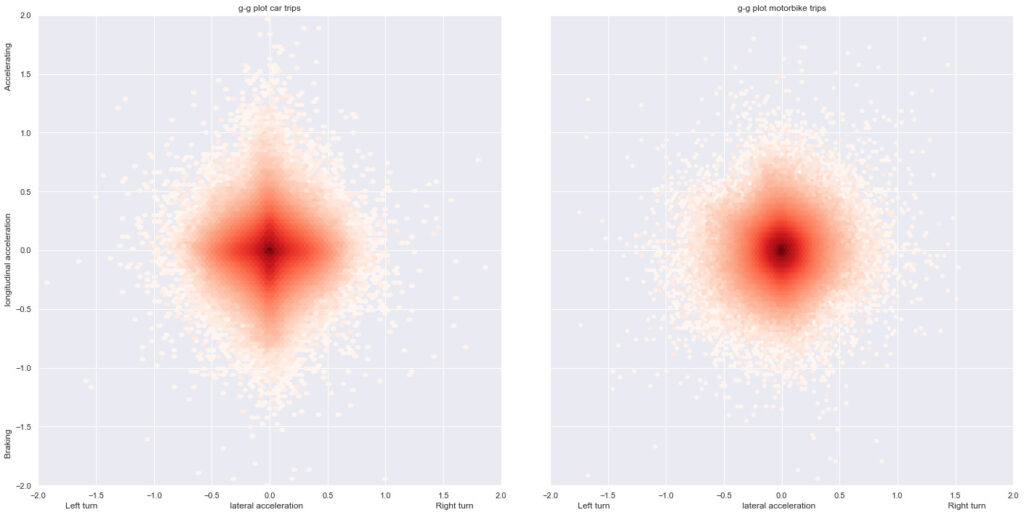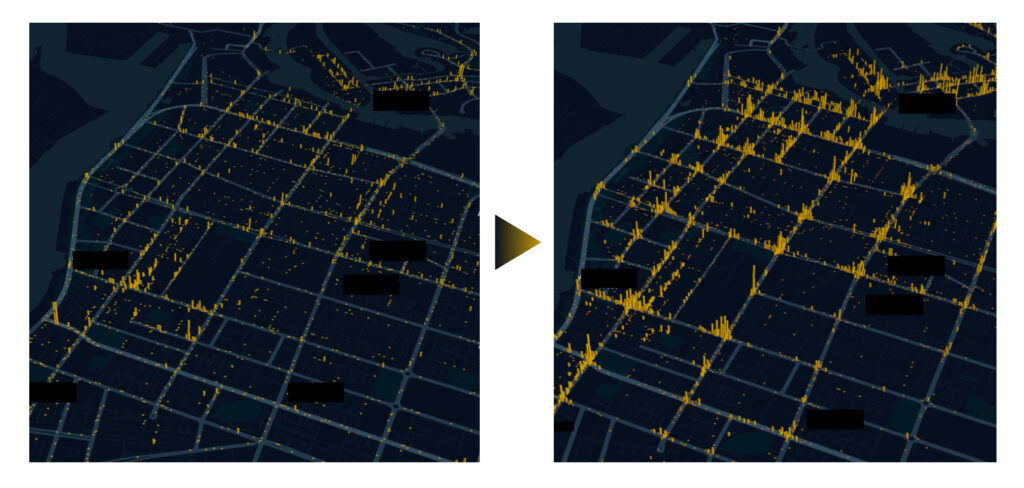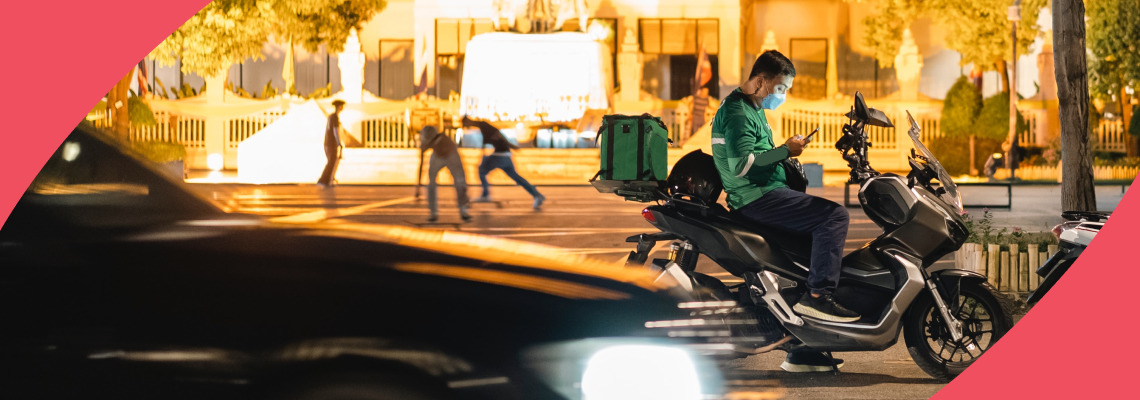Our Driving Insights helps clients understand their users' driving behavior to manage risks smarter, reward good driving behavior, and prevent accidents. The platform takes GPS fixes, accelerometer, and gyroscope data from mobile phones as input to identify risky driving events such as calling while driving, speeding, or harsh driving.
For years, our cutting-edge models have been instrumental in the insurance and mobility sectors, consistently delivering outstanding outcomes. Recently, we've expanded our reach into the gig economy, focusing on enhancing rider safety. Recognizing that the gig economy's unique demands render traditional telematics models less effective, we've embarked on a journey to innovate. We are thrilled to announce that we are actively working on, or have already implemented, a variety of innovative updates. These enhancements are all designed to ensure that our solutions not only meet but also exceed the specific requirements of this dynamic segment.
Enhanced transport mode classifier for delivery riders
Identifying the correct mode of transport is crucial because we have tailored different models specifically for each type, such as cars and motorbikes. Relying on a generic transport classifier that's not specifically built for these use cases is not sufficient. This is particularly important because an average person often switches between various transportation methods within a single day, or even during a single journey — for example, from driving a car to taking a tram and then walking. In contrast, delivery drivers typically remain with one mode of transport throughout their shift. This understanding allows us to refine our classifiers, making them more effective and tailored to the needs of our clients.
We're developing an advanced version of our system that minimizes switching between different transport modes during a shift. This new approach monitors the model's predictions from previous trips and incorporates this data into determining the current mode of transport. Essentially, this adds a form of 'inertia' to our model. It helps to prevent frequent, unnecessary changes in transport mode identification especially between those transport modes that are very similar to each other. However, this new model retains the flexibility to swiftly adapt if it consistently detects a new mode of transport being used repeatedly.
To provide a clearer understanding, the image below illustrates the effectiveness of our new model, which includes an integrated bias, in smoothing predictions. We used an artificially constructed scenario for this demonstration, combining random trips from a select group of users to create a scenario with frequent mode-switching. Despite this challenging scenario, our new model with integrated bias successfully smoothed the predictions, markedly reducing erratic shifts between different modes of transport. This improvement leads to more consistent and reliable results in our transport mode predictions.

Robust models to detect harsh accelerating and braking events
One of the primary risk factors in driving is the severity of acceleration and braking events. In the traditional telematics approach, we rely on signal processing methods like Kalman filters to reorient the accelerometer data from the frame of the mobile phones to the vehicle's frame. However, we found that this technique isn't as effective for two-wheelers out of the box, which exhibit higher noise levels that disrupt these algorithms.
The below acceleration graph (g-g plot) illustrates this issue. On the left, the plot for cars shows distinct lateral and longitudinal accelerations, forming a clear 'plus' sign pattern. In contrast, the right side of the plot, representing two-wheelers, lacks such distinct segregation.

We also discovered that the thresholds set for identifying harsh braking and acceleration in cars aren't suitable for two-wheelers. As a result, we've adjusted these criteria to more accurately reflect risky driving behaviors specific to two-wheelers. This refinement has led to a much closer correlation with actual data, such as accident or insurance claims records.
In our latest analysis, we've demonstrated a twofold increase in the distinction between poor and good drivers based on our driving scores (>2x lift), particularly in terms of road loss frequency.
Support for low-end devices
A significant challenge in this sector, particularly in emerging markets, is the prevalence of low-end devices among riders. These devices often lack standard sensors, such as gyroscopes, which are crucial for detecting harsh events. The absence of these sensors can undermine the effectiveness of traditional signal processing methods commonly used for this purpose. To address this, our data scientists have used a deep learning approach driven by data, which has proven to be far more resilient in handling sensor data from phones with no gyroscopes.
For instance, the spatial analysis plot provided below compares harsh driving events using two different models. In the first image at the top, generated by the traditional model, harsh events are scattered randomly across the map, suggesting lower accuracy. In contrast, the second image at the bottom, produced by our new data-driven model, displays a distribution of harsh events that is more concentrated around intersections and road corners. This pattern is a more realistic representation of where such driving behavior is likely to occur, indicating a higher level of accuracy in our updated model.

Flexible scoring framework
In the gig economy, extensive phone usage is often necessary for workers to perform their jobs effectively. Balancing safety and operational demands is crucial. It's unreasonable to expect sudden behavioral changes from individuals concerned about the potential economic impact on their earnings. Our adaptable scoring framework plays a vital role here, as it's designed to detect distraction events like phone calls that occur at certain speeds while driving. This enables us to pinpoint the riskiest drivers, where the risky behavior is clear, and communication about these risks can lead to effective changes.
Our extensive experience in generating reliable motion insights from mobile devices, combined with our partnerships with global leaders in the gig economy, has deepened our understanding of what it takes to develop a solution that significantly improves rider safety. The transition from hardware-based to mobile-based telematics marked a significant milestone in this field. Now, refining these mobile-based models specifically for two-wheelers represents a major advancement. We're proud to be at the forefront of this pioneering effort.

